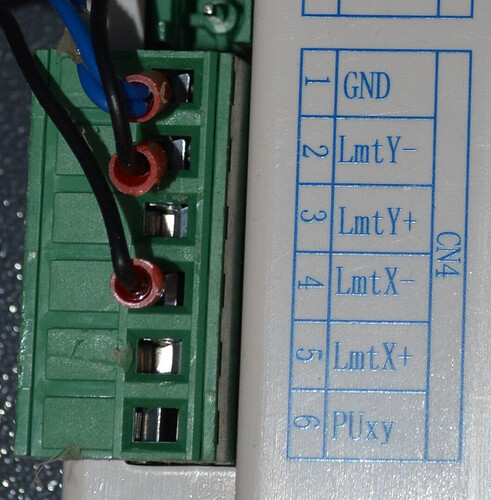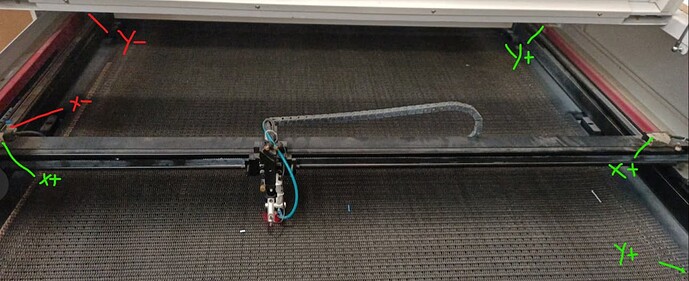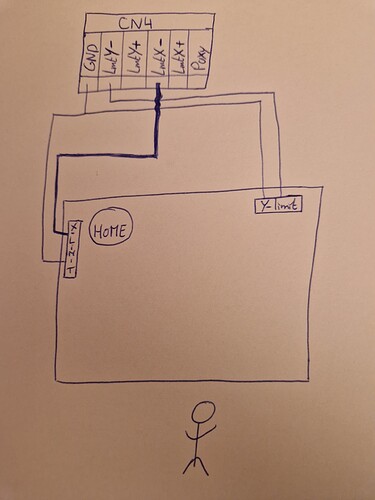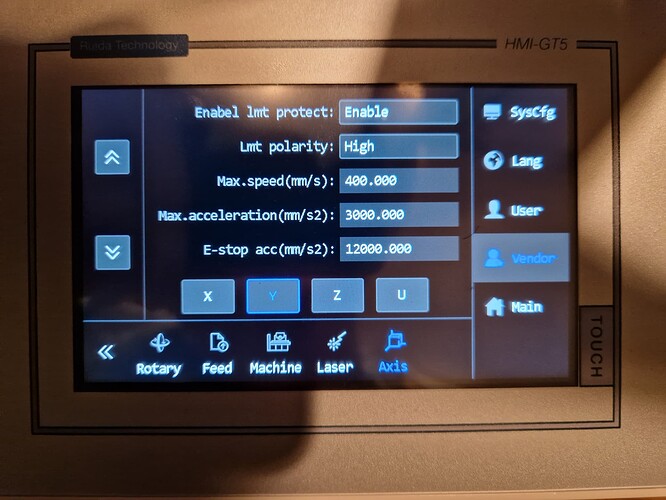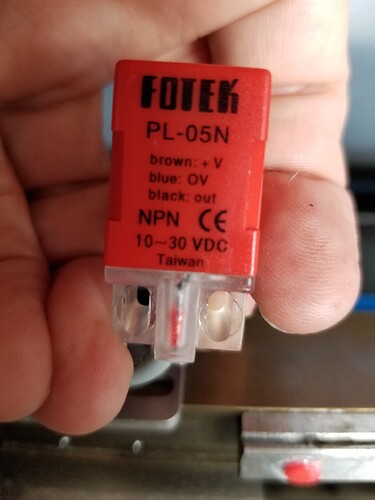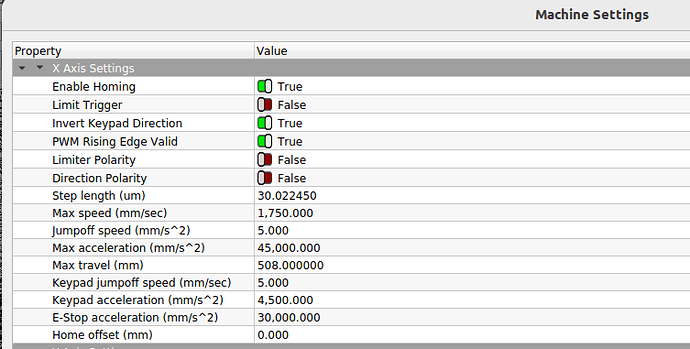There being nothing quite like a good new problem to take one’s mind off all one’s older problems, I just did some tinkering with the X axis settings…
This is on a Ruida-ish KT332N, but the manual’s verbiage is pretty much the same as the 6445G.
LimIter Polarity inverts the sense of the limit switch input signal. My OMTech has Normally Open proximity sensor switches, so the default setting of False makes it inactive in the middle of the platform.
I set it to True, which made it active in the middle of the platform.
So True would be the correct setting for a Normally Closed switch.
Direction polarity sets the direction the axis moves during reset, which must be toward the home switch. Mine was set to False and it homes toward the right side where the limit switch sits.
I set it to True and it started homing toward the left, where the limit switch isn’t. Hitting Esc on the control panel stopped the homing process and left the head in the middle of its travel, unhomed.
Apparently Direction Polarity directly controls the DIR signal to the stepper motors, because both the control panel keys and LightBurn’s motion buttons then moved “the wrong way”.
That does not affect LB’s machine coordinate origin, which remains at the top right of the layout, or the orientation of the X axis, with values increasing toward the left as usual.
The Invert keypad direction setting inverts the motion direction with respect to the homing motion. Mine was False, but flipping it to True reverses both the keypad and LB directions.
I think Limit Trigger refers to “hard limits”, which requires a limit switch at each end of the axis, but my controller does not have the + inputs that would allow me to test that. The controller doc says it uses “soft limits” to prevent out-of-bounds motion by using the home position and maximum axis travel value.
So the available options allow all possible combinations:
- NC or NO limit / home switches
- Homing direction
- Keypad / LB motion commands
Changing those settings requires a controller reset, which will trigger a homing operation if it’s enabled.
Admittedly, the nomenclature leaves a lot to be desired, but their English is far better than my (nonexistent) Mandarin.
With that in mind, careful experimentation on the actual controller in hand seems prudent …
